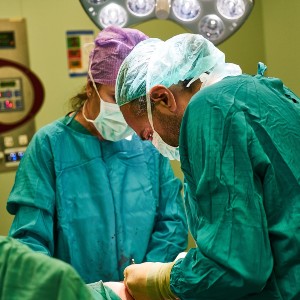Presentations of bladder exstrophy in a resource-limited setting and the role of Mainz II continent diversion for late referrals or failed primary closures: a multicentric report

Submitted: 11 May 2023
Accepted: 2 August 2023
Published: 29 August 2023
Accepted: 2 August 2023
Abstract Views: 767
PDF: 319
HTML: 0
HTML: 0
Publisher's note
All claims expressed in this article are solely those of the authors and do not necessarily represent those of their affiliated organizations, or those of the publisher, the editors and the reviewers. Any product that may be evaluated in this article or claim that may be made by its manufacturer is not guaranteed or endorsed by the publisher.
All claims expressed in this article are solely those of the authors and do not necessarily represent those of their affiliated organizations, or those of the publisher, the editors and the reviewers. Any product that may be evaluated in this article or claim that may be made by its manufacturer is not guaranteed or endorsed by the publisher.
Similar Articles
- Sally K. I. Ishak, Fayrouz El Aguizy, Eman H. Elsebaie, Meray R. L. Youssef, Mohamed M. Ismail, Fatma H. Abdelraouf, Heba A. Abdel Ghaffar, Nermine M. Riad, Role of urinary NGAL and microalbuminuria in the detection of subclinical acute kidney injury in pediatric intensive care unit and diabetic children , La Pediatria Medica e Chirurgica: Vol. 44 No. 2 (2022)
- Alessandro Calisti, Diaaeldinn Yaseen Salman, Kibreab Belay, Andrea Mombo, Boniphace Tresphory, Giovanni Giuliani, Martina Sertori, Gian Battista Parigi, The hidden burden of Pediatric urology in Sub-Saharan Africa: an analysis of hospital admission data from three East African Health Centres , La Pediatria Medica e Chirurgica: Vol. 46 No. 1 (2024)
- Salvatore Arena, Tiziana Russo, Patrizia Perrone, Carmelo Romeo, Operative cystoscopy in the neonatal period , La Pediatria Medica e Chirurgica: Vol. 38 No. 3 (2016)
- Giovanni Cobellis, Giovanni Torino, Gabriele Lisi, Michele Ilari, Edoardo Bindi, Pneumovesicoscopic management of bladder neoplasms in children: three case reports , La Pediatria Medica e Chirurgica: Vol. 45 No. 1 (2023)
- Maria-Grazia Scarpa, Giordano Perin, Massimo Di Grazia, Daniela Codrich, Federica Pederiva, Edoardo Guida, Maria Antonietta Lembo, Antonio Giannotta, Jürgen Schleef, Surgery for distal hypospadias: what about the catheter? , La Pediatria Medica e Chirurgica: Vol. 39 No. 3 (2017)
- Gianluca Lista, Fabio Meneghin, Ilia Bresesti, Francesco Cavigioli, Nutritional problems of children with bronchopulmonary dysplasia after hospital discharge , La Pediatria Medica e Chirurgica: Vol. 39 No. 4 (2017)
- Salvatore Arena, Mario Patricolo, Primary monosymptomatic nocturnal enuresis and associated factors in a referral continence clinic of Abu Dhabi , La Pediatria Medica e Chirurgica: Vol. 39 No. 2 (2017)
- Giovanna Mangili, Elena Garzoli, Feeding of preterm infants and fortification of breast milk , La Pediatria Medica e Chirurgica: Vol. 39 No. 2 (2017)
- George Vlad Isac, Gabriela Mariana Danila, Sebastian Nicolae Ionescu, Spontaneous resolution and the role of endoscopic surgery in the treatment of primary obstructive megaureter: a review of the literature , La Pediatria Medica e Chirurgica: Vol. 45 No. 2 (2023)
- Antonio Marte, Staghorn stone in megapolycalicosis in a child: Still the case for open surgery? Case report , La Pediatria Medica e Chirurgica: Vol. 44 No. 1 (2022)
You may also start an advanced similarity search for this article.

 https://doi.org/10.4081/pmc.2023.323
https://doi.org/10.4081/pmc.2023.323




